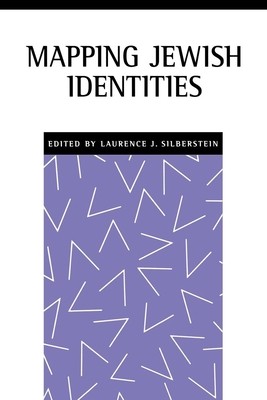
- We will send in 10–14 business days.
- Publisher: New York University Press
- ISBN-10: 0814797695
- ISBN-13: 9780814797693
- Format: 15.2 x 22.8 x 2.4 cm, minkšti viršeliai
- Language: English
- SAVE -10% with code: EXTRA
Mapping Jewish Identities (e-book) (used book) | bookbook.eu
Reviews
Description
Is Jewish identity flourishing or in decline? Community leaders and scholarly researchers continually seek to determine the attitudes, beliefs, and activities that best measure Jewish identity. At issue, according to these studies, is the very survival of the Jewish community itself. But such studies rarely ask what actually is being examined when we attempt to assess Jewish identity or any identity. Most tend to assume that identity is a preexisting, relatively fixed frame of reference reflecting shared cultural and historical experiences.
Drawing on recent work in such fields as cultural studies, poststructuralist theory, postmodern philosophy, and feminist theory, Mapping Jewish Identities challenges this premise. Contesting conventional approaches to Jewish identity, contributors argue that Jewish identity should be conceptualized as an ongoing dynamic process of becoming in response to changing cultural and social conditions rather than as a stable defining body of traits.
Contributors, including Daniel Boyarin, Laura Levitt, Adi Ophir, and Gordon Bearn, examine such topics as American Jews' desires to connect with a lost immigrant past through photography, the complicated function of the Holocaust in the identity formation of contemporary Jews, the impact of the struggle with the Palestinians on Israeli group identity construction, and the ways in which repressed voices such as those of women, Mizrahim, and Israeli Arabs have changed our ways of thinking about Jewish and Israeli identity.
EXTRA 10 % discount with code: EXTRA
The promotion ends in 23d.03:48:40
The discount code is valid when purchasing from 10 €. Discounts do not stack.
- Publisher: New York University Press
- ISBN-10: 0814797695
- ISBN-13: 9780814797693
- Format: 15.2 x 22.8 x 2.4 cm, minkšti viršeliai
- Language: English English
Is Jewish identity flourishing or in decline? Community leaders and scholarly researchers continually seek to determine the attitudes, beliefs, and activities that best measure Jewish identity. At issue, according to these studies, is the very survival of the Jewish community itself. But such studies rarely ask what actually is being examined when we attempt to assess Jewish identity or any identity. Most tend to assume that identity is a preexisting, relatively fixed frame of reference reflecting shared cultural and historical experiences.
Drawing on recent work in such fields as cultural studies, poststructuralist theory, postmodern philosophy, and feminist theory, Mapping Jewish Identities challenges this premise. Contesting conventional approaches to Jewish identity, contributors argue that Jewish identity should be conceptualized as an ongoing dynamic process of becoming in response to changing cultural and social conditions rather than as a stable defining body of traits.
Contributors, including Daniel Boyarin, Laura Levitt, Adi Ophir, and Gordon Bearn, examine such topics as American Jews' desires to connect with a lost immigrant past through photography, the complicated function of the Holocaust in the identity formation of contemporary Jews, the impact of the struggle with the Palestinians on Israeli group identity construction, and the ways in which repressed voices such as those of women, Mizrahim, and Israeli Arabs have changed our ways of thinking about Jewish and Israeli identity.


Reviews